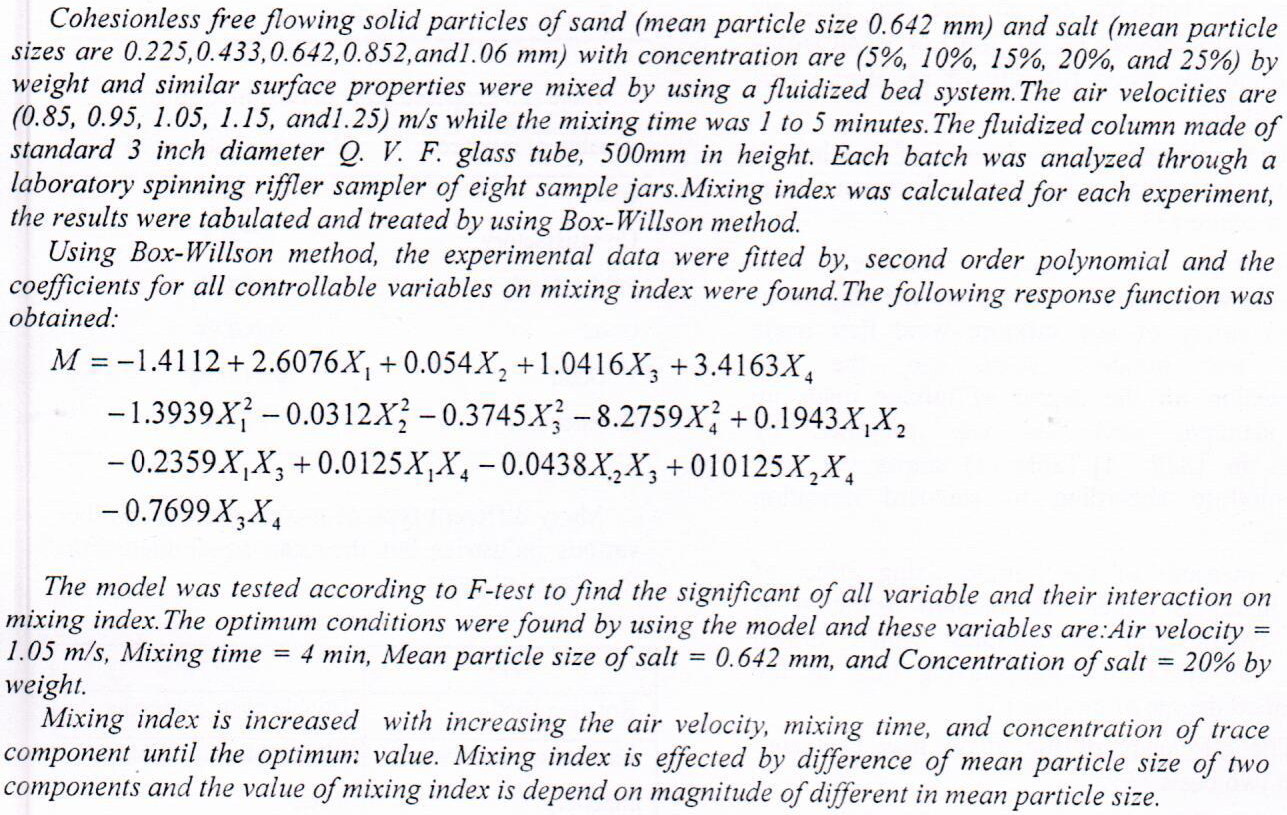
 (6)
(6)
 (2)
(2)
Background: The association between periodontal diseases incidence and development and the metabolic diseases as Diabetes Mellitus and Obesity are recently have attract great deal of researchers attention and investigation. The periodontal health proved to reduce the systemic inflammatory reactions and positively improve the glycemic control of diabetes Type2 patients. The aim of the study was to investigate the influence of oral hygiene control on the glycemic control of obese and normal weight moderately controlled Diabetic Type 2 patients, in addition to study the association of obesity with the gingival inflammation. Materials and Methods: Cross sectional study of three months duration. Included 30 moderately controlled diabetic type2 p
... Show MoreBackground: Radiopacity is one of the prerequisites for dental materials, especially for composite restorations. It's essential for easy detection of secondary dental caries as well as observation of the radiographic interface between the materials and tooth structure. The aim of this study to assess the difference in radiopacity of different resin composites using a digital x-ray system. Materials and methods: Ten specimens (6mm diameter and 1mm thickness) of three types of composite resins (Evetric, Estelite Sigma Quick,and G-aenial) were fabricated using Teflon mold. The radiopacity was assessed using dental radiography equipment in combination with a phosphor plate digital system and a grey scale value aluminum step wedge with thickness
... Show More (2)
(2)
Background: Radiopacity is one of the prerequisites for dental materials, especially for composite restorations. It's essential for easy detection of secondary dental caries as well as observation of the radiographic interface between the materials and tooth structure. The aim of this study to assess the difference in radiopacity of different resin composites using a digital x-ray system. Materials and methods: Ten specimens (6mm diameter and 1mm thickness) of three types of composite resins (Evetric, Estelite Sigma Quick,and G-aenial) were fabricated using Teflon mold. The radiopacity was assessed using dental radiography equipment in combination with a phosphor plate digital system and a grey scale value aluminum step wedge with thickness
... Show MoreTested effective Alttafaria some materials used for different purposes, system a bacterial mutagenesis component of three bacterial isolates belonging to different races and materials tested included drug Briaktin
 (25)
(25)
 (24)
(24)
In this research, the use of natural materials like wool and cannabis as intermediate reinforcement for prosthetic limbs due to their comfort, affordability, and local availability was discussed. As part of this study on below-the-knee (BK) prosthetic sockets, two sets of samples were made using a vacuum method. These sets were made of natural fiber-reinforced polymer composites with lamination 80:20: group (Y) had 4 perlon, 1 wool 4 perlon, and group (G) had 4 perlon, 1 cannabis 4 perlon. The two groups were compared with a socket made of polypropylene. Tensile testing was used to determine the mechanical characteristics of the socket materials. The Y group has a yield stress of 17 MPs, an ultimate strength of 18.75 MPa, and an elastic
... Show MoreBackground: The finite element method (FEM) is expected to be one of the most effective computational tools for measuring the stress on implant-supported restorations. This study was designed using the 3D-FEM to evaluate the effect of two adhesive luting types of cement on the occlusal stress and deformation of a hybrid crown cemented to a mono-implant. Materials and Method: The mono-screw STL file was imported into the CAD/CAM system library from a database supported by De-Tech Implant Technology. This was to assist in the accurate reproduction of details and design of a simulated implant abutment. Virtually, a digital crown was designed to be cemented on an abutment screw. A minimum occlusal thickness of 1mm and marginal fitting of 1.2
... Show More (2)
(2)
 (2)
(2)
